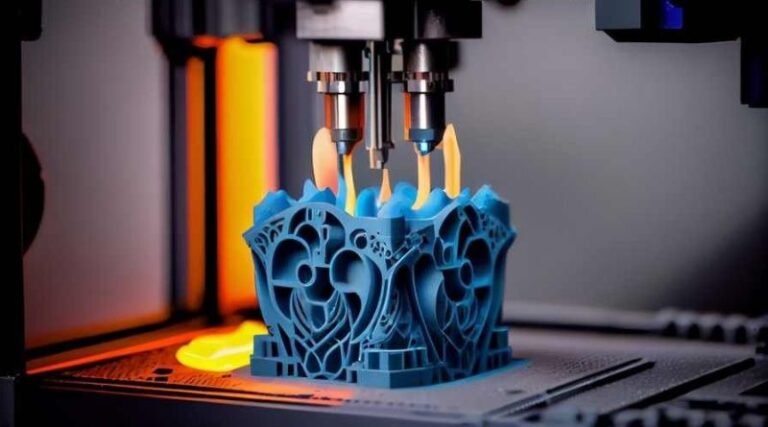How 3D Printing is Transforming Manufacturing and Design
The industrial landscape has undergone a significant evolution over the past few decades, but perhaps no innovation has captured the imagination of both manufacturers and designers like 3D printing. Also known as additive manufacturing, 3D printing is reshaping how products are conceived, created, and delivered, offering unprecedented flexibility and innovation. This article explores how 3D printing is transforming manufacturing and design, and what this means for the future of these industries.
A New Approach to Prototyping
In traditional manufacturing, creating a prototype can be a long, expensive, and resource-intensive process. 3D printing changes this by allowing designers and engineers to quickly produce prototypes directly from digital models. What used to take weeks can now be done in a matter of hours or days, giving teams more room for experimentation and reducing the time needed to bring a product to market.
Moreover, this rapid prototyping isn’t just faster—it’s also more cost-effective. Companies no longer need to create custom molds or use specialized machinery to test new designs. With a 3D printer, virtually any design can be translated into a physical object, enabling swift iteration and refinement of concepts.
Customization at Scale
One of the most exciting aspects of 3D printing is its ability to offer mass customization. In traditional manufacturing, producing customized products is often cost-prohibitive due to the need for specialized tools, molds, or assembly lines. However, 3D printing allows for the production of one-of-a-kind or limited-edition products at a fraction of the cost.
For instance, in industries such as healthcare, 3D printing is being used to create custom prosthetics tailored to the exact dimensions of an individual patient. Similarly, in fashion, designers are using 3D printers to produce personalized accessories and footwear. This customization can be extended to nearly any sector, from automotive parts to consumer electronics, pushing the boundaries of personalized design on an industrial scale.
Reducing Waste and Material Usage
Traditional manufacturing methods, such as injection molding or machining, often result in substantial material waste. 3D printing, on the other hand, is additive—meaning materials are added layer by layer to create a product, rather than cutting away excess material. This leads to significantly reduced waste and a more sustainable manufacturing process.
Furthermore, 3D printers can use a wide variety of materials, including plastics, metals, and even bio-materials. Some companies are experimenting with recycled or eco-friendly materials, aiming to lower the environmental footprint of manufacturing. By optimizing material usage and minimizing waste, 3D printing is helping to make manufacturing more sustainable.
Empowering Complex and Intricate Designs
Designers and engineers are no longer constrained by the limitations of traditional manufacturing techniques. 3D printing enables the creation of highly intricate and complex structures that would be impossible or extremely costly to produce using conventional methods.
For example, aerospace companies are using 3D printing to manufacture lightweight, highly efficient parts with complex geometries that improve performance. In architecture, designers are utilizing 3D printers to create detailed models that help visualize intricate building designs. The level of precision offered by 3D printing opens up new possibilities in creative industries, allowing for innovation that was once limited by the manufacturing process.
Shortening Supply Chains
3D printing also has the potential to radically change supply chains. Traditionally, companies need to rely on extensive networks of suppliers, manufacturers, and distributors to get products from the factory floor to consumers. With 3D printing, manufacturers can produce parts and products closer to their final destination, reducing the need for shipping and warehousing.
This decentralized production model allows companies to respond more quickly to market demands, reduce transportation costs, and even produce on-demand. For instance, if a company needs a specific part, instead of waiting for it to be shipped from across the world, they can simply 3D print it locally, saving both time and money.
Challenges and the Road Ahead
While 3D printing holds enormous promise, it is not without its challenges. The speed of production is still slower than traditional methods for mass production, and the cost of high-quality 3D printers and materials can be prohibitive for smaller businesses. Additionally, there are concerns around intellectual property, as the ability to print digital files raises questions about ownership and rights.
Despite these challenges, 3D printing is advancing rapidly, with ongoing research focused on improving speed, material diversity, and cost-effectiveness. As these hurdles are overcome, 3D printing is poised to become a mainstream manufacturing technology, reshaping industries in ways we are only beginning to understand.
Conclusion
3D printing is undeniably transforming the worlds of manufacturing and design. From rapid prototyping and customization to reducing waste and empowering complex creations, the benefits of this technology are vast. As 3D printing continues to evolve, it will not only change how products are made but also redefine the possibilities of what can be created. For industries looking to innovate and stay competitive, embracing 3D printing could very well be the key to future success.

